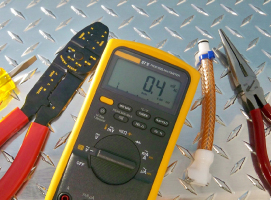Written by:
Howard Fenton
Senior Technology Consultant
NAPL
What if you could automate the manual steps required to calibrate your digital press and maintain the adjustments for consistent printing? What if the technology existed that would help you match color across different devices? The result would be increased utilization costs, reduced cost per page and a faster ROI (Return on Investment).
Last July, we introduced the idea that utilization rates play a role in cost per page and return on investment. Due to peaks (high volume) and valleys (low volume) in demand we can see these effects each month on the cost per page. For example, in one recent assignment we calculated a cost per color page for a Xerox customer ranged from a low of 9¢ to a high of 19¢ an impression depending on if the work was done during a peak or valley in production.
Another aspect of cost and the ROI of color printing is the ability to match and maintain a color consistency with less expensive devices, which was the subject of a recent blog about color matching on more affordable color devices. Another piece to this puzzle are the results from an independent testing lab that showed that the IGen4 offers one of the highest utilization rates in the industry.
Spencer Labs compared a Xerox iGen4 with two Indigo presses in a utilization test.
According to the report, the Spencer Labs staff trained the production staff in multiple locations in the data collection protocol. This protocol analyzed uptime and downtown and categorized different types of downtime such as morning maintenance, consumable change, quality control, etc.
Their conclusion was “The Xerox iGen4’s consistently high actual daily machine production time contributed to its highest average availability for the test period. The iGen4 required lower morning routine, job setup and consumable change time.” According to the graphic, the iGen achieved 85% utilization, the Indigo 5500 68% and the Indigo 7000 was 58%.
What are the three steps to reduce the ROI of a digital press?
- automate the manual steps required to calibrate the device
- streamline the process that checks and readjusts the color
- reduce the time to achieve color match across devices
All three result in better utilization rates and a faster ROI.
Howard Fenton is a Senior Technology Consultant at NAPL. Howie advises commercial printers, in-plants, and manufacturers on workflow management, operations, digital services, and customer research. He is a paid contributor to this blog.



Actually in seeing this in print … I think I should have been titiled “reduce the time to achieve an ROI”